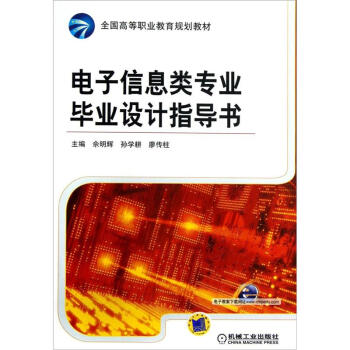![密码协议:基于可信任新鲜性的安全性分析(英文版) [Cryptographic Proto-col:Security Analysics Based on Trusted Freshness]](https://pic.windowsfront.com/10867858/565524f7Ncc9a6000.jpg)
密码协议:基于可信任新鲜性的安全性分析(英文版) [Cryptographic Proto-col:Security Analysics Based on Trusted Freshness] pdf epub mobi txt 电子书 下载 2025
- Cryptography
- Security Protocols
- Trusted Freshness
- Security Analysis
- Formal Verification
- Information Security
- Network Security
- Protocol Design
- Computational Security
- Applied Cryptography

具体描述
内容简介
《密码协议:基于可信任新鲜性的安全性分析(英文版)》主要介绍如何利用系统工程思想和可信任新鲜性的方法,分析和设计密码通信协议。作者基于可信任的新鲜性标识符概念,提出了一个新颖的新鲜性原则。该原则指出了一种有效的、易用的密码协议安全性分析方法。使用这种分析方法,可以有效检验协议在实际应用中能否满足安全需要。此外,书中给出大量的分析实0例,详细说明如何基于概率定义安全性,如何将安全指标定量化,如何针对具体的协议寻找漏洞,如何自动实现协议漏洞的查找,等等。《密码协议:基于可信任新鲜性的安全性分析(英文版)》总结了作者近年来的研究成果,这些成果的有效性和易用性对从事通信协议安全性研究的人员,特别是工程技术人员,具有很好的参考和实用价值。董玲网络系统建设和信息安全领域高级工程师,上海交通大学密码与信息安全实验室兼职教授、研究兴趣是信息安全和应用密码学,特别是实际应用的密码通信协议和密码系统的安全性分析。陈克非上海交通大学计算机科学与工程系教授,长期从事密码与信息安全理论研究。主要研究兴趣是序列密码、可证明安全、密码协议分析、数据安全。近年来承担多项国家自然科学基金、国家高技术研究发展计划(863计划),发表学术论文150多篇,编辑出版学术著作7部。
目录
l Introduction of Cryptographic Protocols1.1 Information security and cryptography
1.2 Classes of cryptographic protocols
1.2.1 Authentication protocol
1.2.2 Kev establishment protocol
1.2.3 Electronic commerce protocol
1.2.4 Secure multi-party protocol
1.3 Security of cryptographic protocols
1.4 Motivations of this book
References
2 Background of Cryptographic Protocols
2.1 Preliminaries
2.1.1 Functions
2.1.2 Terminology
2.2 Cryptographic primitives
2.2.1 Cryptology
2.2.2 Symmetric-key encryption
2.2.3 Public-key encryption
2.2.4 Digital signatures
2.2.5 Hash Functions
2.2.6 Message authentication
2.3 Cryptographic protocols
2.3.1 Secure channel
2.3.2 Principals
2.3.3 Time-variant parameters
2.3.4 Challenge and response
2.3.5 Other classes of cryptographic protocols
2.4 Security of cryptographic protoco
2.4.1 Attacks on primitives
2.4.2 Attacks on protocols
2.4.3 Security of protocols
2.4.4 Analysis methods for protocol security
2.5 Communication threat model
2.5.1 Dolev-Yao threat model
2.5.2 Assumptions ofprotoc01 environment
2.5.3 Expressions of cryptographic protocols
References
3 Engineering Principles for Security Design of Protocols
3.1 Introduction of engineering principles
3.1.1 Prudent engineering principles
3.1.2 Cryptographic protocol engineering principles
3.2 Protocol engineering requirement analysis
3.2.1 Security requirement analysis
3.2.2 Plailltext analysis
3.2.3 Application environment analysis
3.2.4 Attack model and adversary abilities analysis
3.2.5 Cryptographic service requirement analysis
3.3 Detailed protocol design
3.3.1 Liveness of the principal’S identity
3.3.2 neshness and association of time-variant parameter
3.3.3 Data integrity protection of message
3.3.4 Stepwise refinement
3.4 Provable security References.
4 Informal Analysis Schemes of Cryptographic Protocols
4.1 The security of cryptographic protocols
4.1.1 Authenticity and confidentiality under computational model
4.1.2 Security definitions
4.2 Security mechanism based on trusted freshenss
4.2.1 Notions
4.2.2 Freshness principle
4.2.3 Security of authentication protoc01
4.2.4 Manual analysis based on trusted freshness
4.2.5 Application of security analysis based on trusted freshness
4.3 Analysis of classic attacks
4.3.1 Man in the middle attack
4.3.2 Source-substitution attack
……
5 Security Analysis of Real World Protocols
6 Guarantee of Cryptographic Protocol Security
7 Formalism of Protocol Security Analysis
8 Design of Cryptographic Protocols Based on Trusted
9 Automated Analysis of Cryptographic Protocols
Index
精彩书摘
Over the ages,information was typically stored and transmitted on paper,whereas much of it now resides on magnetic media and iS transmitted via computer networks.As we all know.it iS much easier to copy and alterinformation stored and transmitted electronically than that on paper.Infor-mation security intends to provide security services for information in digitalform·Information security objectives include confidentiality,data integrity,authentication,non-repudiation,access control,availability,fairness and SO on·Computer and network security research and development foCUS on thefirst four general security services,from which other security services,such as access control,and fairness can be derived[卜引.Many terms and COnceptsin this book are from Ref_[1]which is well addressed.For strict 0r inquisitive readers,please refer to book 11 for detailed information.一Confidentiality is a service used to keep the content of information from aU but those authorized to have it.That is,the information in a computer systern or transmitted information cannot be comprehended by unau- thorized parties·Secrecy IS a term synonymous with confidentiality and privacy.……
用户评价
“Cryptographic Protocol: Security Analysis Based on Trusted Freshness”——仅仅是书名,就让我这位对复杂系统和理论逻辑着迷的读者,脑海中浮现出无数的可能性。我猜想,这本书并非一本简单的入门手册,而更像是一次深入的学术探索,可能适合那些已经对密码学基础有一定了解,并且希望在理论层面寻求突破的研究者或高级从业者。我特别好奇“Trusted Freshness”这个核心概念是如何被定义和数学化的。在现实世界的通信中,我们如何才能真正“信任”一个信息是“新鲜”的?这其中可能涉及到对时钟同步、不可预测的事件发生顺序,甚至是分布式共识机制的考量。这本书会不会提供一个全新的视角来评估现有协议的安全性,例如,一个在传统意义上“安全”的协议,在引入“新鲜性”评估后,是否会暴露出新的脆弱点?我设想着书中会用严谨的逻辑和详尽的数学符号来构建分析框架,或许会借鉴形式化方法、模型检测等技术,来证明一个协议在“可信任新鲜性”下的安全性属性。而“安全性分析”这部分,我期望能够看到对不同类型密码协议的深入剖析,比如认证协议、密钥协商协议,甚至是更复杂的零知识证明协议,它们在“新鲜性”方面的表现如何,又该如何衡量?这本书给我一种感觉,它在试图填补理论研究中的某个空白,或者为解决当前密码学领域面临的某些新兴挑战提供理论支撑。
评分The title itself, "Cryptographic Protocol: Security Analysis Based on Trusted Freshness," immediately piqued my interest as someone with a keen eye for the intricate details of system design and resilience. I envision this book delving into a sophisticated exploration of how the concept of "trusted freshness" can be a fundamental pillar in ensuring the security of cryptographic protocols, moving beyond traditional notions of confidentiality and integrity. It suggests a framework for analyzing protocols where the temporal aspect of data or operations is paramount. I'm particularly intrigued by the idea of quantifying or verifying "freshness." How do we establish trust in the timeliness of information in a distributed or adversarial environment? This could involve exploring sophisticated mechanisms for detecting replay attacks, ensuring message ordering, or even incorporating tamper-evident timestamps in a cryptographically sound manner. I anticipate that the book will present a rigorous theoretical foundation, potentially drawing from advanced topics in formal methods, logic, and probabilistic analysis, to build this framework. The "security analysis" aspect implies a systematic approach to identifying vulnerabilities and demonstrating the robustness of protocols that incorporate this "trusted freshness" property. It might also offer novel design principles for new protocols that are inherently resistant to attacks exploiting stale or replayed information. This title promises a deep dive into a critical, yet perhaps under-explored, dimension of cryptographic security.
评分This book title, "Cryptographic Protocol: Security Analysis Based on Trusted Freshness," immediately grabbed my attention due to its precise and intriguing focus. It suggests a departure from more generalized security analysis and points towards a specialized investigation into a crucial, yet often implicit, security requirement: freshness. I anticipate that the author will thoroughly define what constitutes "trusted freshness" within the context of cryptographic protocols, perhaps distinguishing it from simple timeliness or ordering. The emphasis on "security analysis" implies a deep, rigorous examination, likely involving formal methods, proofs, and a critical evaluation of existing protocols against this specific criterion. I wonder if the book will explore various attack vectors that exploit a lack of trusted freshness, such as replay attacks, timing attacks, or race conditions, and then present corresponding mitigation strategies. Furthermore, I'm curious about the practical implications. Will the book offer concrete design principles or architectural patterns for building protocols that are inherently robust in terms of freshness? It could potentially bridge the gap between theoretical cryptographic concepts and their real-world implementation in secure systems, particularly in distributed and asynchronous environments where ensuring freshness is a significant challenge. The title evokes a sense of depth and intellectual rigor, promising to shed light on a vital aspect of cryptographic security that is essential for the integrity and reliability of modern digital communications and transactions.
评分这本书的书名《密码协议:基于可信任新鲜性的安全性分析》一开始就吸引了我。我一直对信息安全领域,特别是加密协议的底层原理和安全性分析很感兴趣,而“可信任新鲜性”这个概念听起来非常有深度。它似乎不仅仅是关注数据是否被篡改,更进一步探讨了数据在特定时间点上的有效性和可靠性,这在很多实际应用场景下至关重要,比如数字签名、时间戳服务、分布式账本技术等。我想象着书中会深入剖析现有加密协议的弱点,并提出如何通过引入“可信任新鲜性”来增强它们的鲁棒性。这可能涉及到对一些经典密码学概念的重新审视,以及对新兴安全威胁的预测和应对。我尤其期待书中能够提供一些具体的分析框架和方法论,能够指导我如何去评估和设计一个在“可信任新鲜性”方面表现出色的密码协议。毕竟,理论上的讨论固然重要,但能够转化为实际操作的指导才是更有价值的。书名中“安全性分析”这四个字也预示着这本书会包含大量的理论推导、形式化证明,甚至可能涉及一些复杂的数学模型。我不知道我的数学基础是否足够应对,但挑战本身也充满了吸引力。总而言之,这本书的书名给我一种既权威又前沿的感觉,让我对接下来的内容充满了期待,希望能从中获得深刻的见解和实用的知识,为我在信息安全领域的学习和研究打下更坚实的基础。
评分"密码协议:基于可信任新鲜性的安全性分析"——光是这个书名,就足够让一个对信息安全领域有着浓厚兴趣,并且尤其关注协议设计和安全保障的人,产生强烈的求知欲。我脑海中浮现出的是一本深入探讨“可信任新鲜性”这一概念如何成为加密协议安全基石的著作。这不仅仅是关于防止信息被窃听或篡改,更是关于如何确保信息在特定时间点上的有效性和可靠性。我想象着书中会详细阐述,在面对分布式系统、网络延迟、以及可能存在的恶意攻击者时,我们如何能够“信任”一个信息是“新鲜”的。这可能涉及到对现有协议进行重新审视,分析它们在“新鲜性”方面存在的潜在漏洞,并提出改进方案。这本书是否会提出一种全新的、量化的方法来评估协议的“可信任新鲜性”?是否会深入探讨一些新兴的密码学技术,例如带有时间限制的加密、拜占庭容错机制,或者其他能够确保信息时间属性的技术,并分析它们在协议安全中的作用?“安全性分析”这部分,我期待能够看到严谨的逻辑推导,甚至可能是形式化的证明,来阐述如何通过引入“可信任新鲜性”来提升协议的整体安全性。这无疑是一本能够启发思考,拓展视野,并可能对密码协议设计产生深远影响的学术性著作。
相关图书
本站所有内容均为互联网搜索引擎提供的公开搜索信息,本站不存储任何数据与内容,任何内容与数据均与本站无关,如有需要请联系相关搜索引擎包括但不限于百度,google,bing,sogou 等,本站所有链接都为正版商品购买链接。
© 2025 windowsfront.com All Rights Reserved. 静流书站 版权所有











![现代传声器原理失音技术与系统集成 [Advanced Microphone:Principles,Pickup Technology and Systems Integration] pdf epub mobi 电子书 下载](https://pic.windowsfront.com/11070211/rBEHalBPJTUIAAAAAADqQBDvsDEAABI2QBHnTkAAOpY129.jpg)








